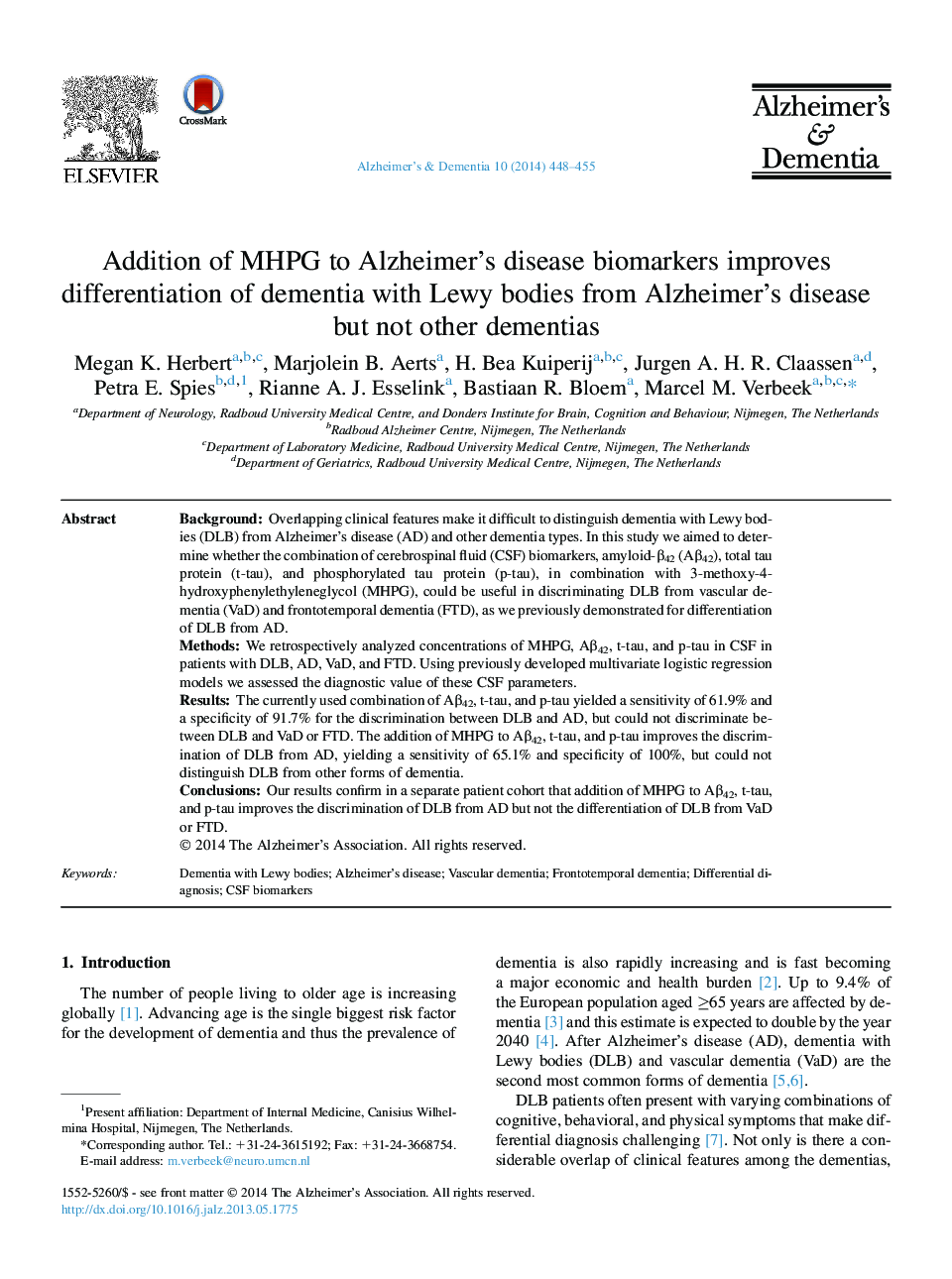| Article ID | Journal | Published Year | Pages | File Type |
|---|---|---|---|---|
| 5624217 | Alzheimer's & Dementia | 2014 | 10 Pages |
BackgroundOverlapping clinical features make it difficult to distinguish dementia with Lewy bodies (DLB) from Alzheimer's disease (AD) and other dementia types. In this study we aimed to determine whether the combination of cerebrospinal fluid (CSF) biomarkers, amyloid-β42 (Aβ42), total tau protein (t-tau), and phosphorylated tau protein (p-tau), in combination with 3-methoxy-4-hydroxyphenylethyleneglycol (MHPG), could be useful in discriminating DLB from vascular dementia (VaD) and frontotemporal dementia (FTD), as we previously demonstrated for differentiation of DLB from AD.MethodsWe retrospectively analyzed concentrations of MHPG, Aβ42, t-tau, and p-tau in CSF in patients with DLB, AD, VaD, and FTD. Using previously developed multivariate logistic regression models we assessed the diagnostic value of these CSF parameters.ResultsThe currently used combination of Aβ42, t-tau, and p-tau yielded a sensitivity of 61.9% and a specificity of 91.7% for the discrimination between DLB and AD, but could not discriminate between DLB and VaD or FTD. The addition of MHPG to Aβ42, t-tau, and p-tau improves the discrimination of DLB from AD, yielding a sensitivity of 65.1% and specificity of 100%, but could not distinguish DLB from other forms of dementia.ConclusionsOur results confirm in a separate patient cohort that addition of MHPG to Aβ42, t-tau, and p-tau improves the discrimination of DLB from AD but not the differentiation of DLB from VaD or FTD.
